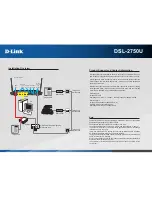
SECTION 4. OPERATION OF THE RADIOTELEMETRY NETWORK
4-5
The CALL STATION stationname option is
used to initiate a connection with the field
site. After the call, GraphTerm remain in
telecommunications (on-line) with the
remote site. The call option can be used to
test the communication path to a field site.
Note that the LINK TEST FOR RF can also
be used to test communications. The other
GraphTerm options will automatically call the
station when selected if it is not already “on-
line."
The TERMINAL EMULATOR allows direct
programming of the datalogger or viewing of
the dataloggers * modes.
The DOWNLOAD PROGRAM TO
DATALOGGER is used to transfer a
datalogger program (DLD file) from the
computer to the datalogger.
CAUTION: Downloading a program to a
datalogger erases all data in the
datalogger! Data should be collected
BEFORE downloading a program.
Datalogger programs are created with the
EDLOG program. The SAVE PROGRAM
FROM THE DATALOGGER option transfers
the datalogger program to the computer.
This is useful if the original program created
with EDLOG is not available or if the
program was created with the keyboard
display or in terminal mode.
The PC TIME TO DATALOGGER option
sets the datalogger clock according to the
PC clock. GraphTerm will prompt with the
current PC time and confirm that the
datalogger clock should be set. The
datalogger uses its clock to schedule data
storage and measurements. Changing the
clock may alter the length of the interval
used for processing output data. In addition,
changing the datalogger clock such that it
crosses an output interval may cause an
output to be skipped or repeated. For
example, changing the datalogger clock
from 10:59 to 11:02 will cause the 11:00
hour output to be missed. The output at
12:00 will be correctly based on the entire
two hour period.
The MONITOR INPUT LOCATIONS option is
used to display the current measurement values
from the dataloggers Input Locations and other
data tables. The values can be displayed
digitally or graphically on strip charts and bar
charts. The datalogger flags and ports may also
be toggled. Values can also be directly loaded
into Input Locations. Data can be collected for
archiving while monitoring. GraphTerm also
supports the display of data from user defined
tables (created with Instruction P84 in the
datalogger program). These other tables are
selected in the location editor (press L at the
graphical monitor mode screen). Change the
GRAPH SETUP FILE: parameter adding _n
where n is the number of the table to be
monitored. For example, the station name
where CR10T is changing the GRAPH SETUP
FILE: to CR10T_1 would allow display of the first
table. Each table has its own setup file. The
tables are numbered in the order the P84
instructions appear in the datalogger program.
The CR10T has 3 “built in” tables in addition to
the Input Locations; STATUS, TIMESET, and
ERRORLOG tables. These also may be
selected although they are not typically graphed
or monitored. GraphTerm allows the display of
all data from the user defined data tables stored
in the datalogger. Older data may be scrolled
through or the strip charts may be allowed to
“advance” as new data is stored. When a strip
chart is started, GraphTerm will collect some
older data to “backfill” the chart part way and
then allow the chart to “advance." See the
GraphTerm help screen for information on
scrolling keys.
The COLLECT UNCOLLECTED DATA allows the
collection of data from the datalogger. GraphTerm
prompts allow the selection of which tables and
which individual fields within these tables should
be collected. GraphTerm bases what data has not
been collected on what data GraphTerm has
collected with this station file. GraphTerm has no
knowledge of what data may have been collected
with RTMS or with GraphTerm using a different
station file. All specified data that exists in the
datalogger will be collected on the first call.
GraphTerm stores the data in files with the station
name for the name and the table number for the
extension. Normally all fields from the tables
should be collected. GraphTerm will append data
to an existing data file. If the field selections have
changed GraphTerm will insert a new header
showing the currently selected fields. A header is
also inserted at the start of a new file.








































